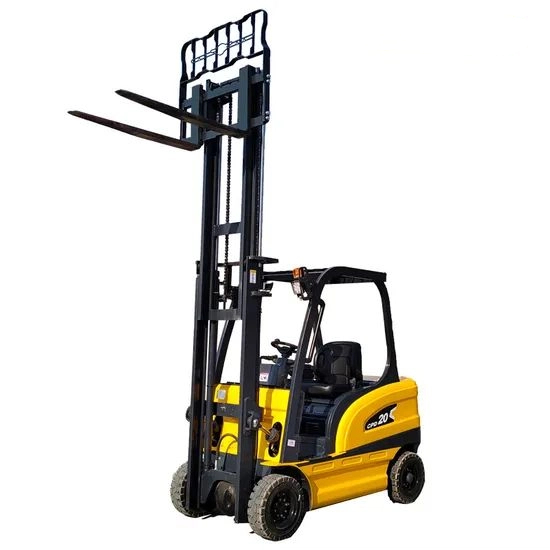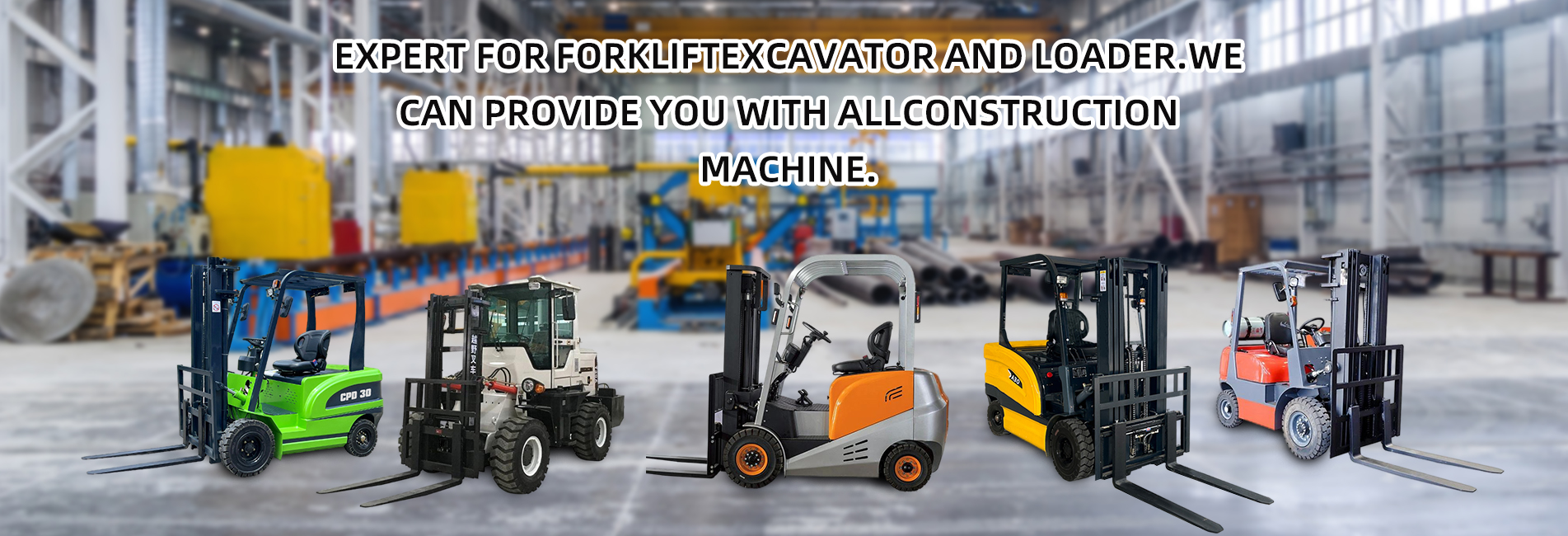To become a qualified electric forklift operator, you need to systematically improve yourself in four core dimensions: qualification certification, skill mastery, safety awareness, and professional ethics, ensuring that operations are compliant, efficient, and safe. The following are the specific steps and requirements:

I. Obtain Statutory Qualifications: Certification is the Foundation
In accordance with the Special Equipment Safety Law and the Measures for the Supervision and Administration of Special Equipment Operators, electric forklifts fall under the category of "special motor vehicles for on-site (factory) use". Before operating one, you must obtain a nationally recognized forklift operation certificate (issued by market supervision and administration departments or their authorized institutions, valid nationwide for 4 years, and subject to regular review).
Reference for Certificate Application Process:
- Application Requirements
- Be at least 18 years old;
- Be in good health (no diseases that impede driving, such as epilepsy, color blindness, hypertension, etc.);
- Have a junior high school education or above;
- Be able to read equipment operation manuals.
- Training and Learning
Choose a formal training institution registered with market supervision departments. The learning content includes two parts:- Theoretical Knowledge: Forklift structure (battery, motor, hydraulic system, etc.), traffic rules (factory speed limits, passage priority), safety regulations, and emergency handling (e.g., electric leakage, cargo tipping).
- Practical Training: Basic operations such as starting/shutting down the electric forklift, moving forward/backward/turning, picking up cargo (alignment, lifting, lowering), stacking (accurate height positioning), and operating in narrow spaces.
- Examination and Certification
Pass the theoretical written exam (full score 100, passing score 80) and practical assessment (evaluating operational standardization, efficiency, and safety). After passing, you will receive the certificate.
II. Master Core Operational Skills: Precision is the Key
After obtaining the certificate, you need to upgrade "basic operations" to "proficient skills" through repeated practice, focusing on operational details in the following scenarios:
1. Equipment Inspection and Warm-up (Mandatory Before Startup)
- Daily Inspection: Confirm the battery power (charge when it is below 20% to avoid battery damage from over-discharging), tire pressure (check for damage or air leakage), braking system (sensitivity of foot brakes and hand brakes), hydraulic system (check for oil leakage), and lights/horn (normal warning function). Fill out the Equipment Inspection Form.
- Warm-up Operation: After starting, idle for 1-2 minutes, test whether the steering and lifting/lowering buttons work smoothly, and confirm that there are no fault alarms on the instrument panel (e.g., battery fault light, hydraulic pressure light).
2. Standardized Cargo Operation (Core Skill)
- Cargo Picking: Keep the forklift parallel to the cargo stack, match the fork spacing to the cargo width (to avoid one-sided stress), insert the forks fully into the bottom of the pallet, lift the cargo 10-15 cm off the ground (to prevent scraping the ground), and then adjust to the driving height (usually no more than 50 cm to avoid high center of gravity).
- Stacking/Unstacking: Approach the shelf slowly, ensure the forks are aligned with the shelf boards, lift the cargo steadily 5-10 cm above the shelf board, lower it slowly after alignment, and withdraw the forks only after confirming the cargo is stable (sudden lifting or lowering is prohibited).
- Transport Process: Do not exceed the factory speed limit (usually 3-5 km/h indoors, no more than 10 km/h outdoors); slow down and sound the horn when turning; avoid sudden braking (to prevent cargo slipping); follow the rule of "slow down, look around, and pass" at intersections.
3. Equipment Maintenance and Emergency Handling
- Daily Maintenance: Clean the forklift after operation (remove debris from forks and dust from the body); keep the area ventilated when charging the battery (to avoid overheating); regularly check the hydraulic oil and brake pad wear (maintain according to the manufacturer’s manual schedule).
- Emergency Handling: In case of forklift electric leakage, cut off the power immediately and stay away; if cargo tips over, do not force it to stand upright—ensure your own safety first, then contact management for handling; in case of a collision, stop immediately to check for injuries to personnel, damage to equipment and cargo, report the incident, and keep records.
III. Strengthen Safety Awareness: Compliance is the Bottom Line
The core risks of electric forklift operations include "equipment collisions, cargo falling, and accidental injury to personnel". Safety must always be the top priority:
1. Abide by On-site Rules
- Do not carry people illegally (forklifts are only for transporting cargo; carrying people is strictly prohibited) and do not overload (operate strictly according to the forklift’s rated load, ensure the cargo’s center of gravity is at the center of the forks, and prohibit one-sided overwidth).
- Distinguish between "operation areas and passages"; do not stay or stack cargo in passages; give way to pedestrians (pedestrians have priority—stop to let pedestrians pass when encountering them).
2. Avoid Operational Taboos
- Prohibit operation under the influence of alcohol or when fatigued (ensure a good mental state before operation; take a short break after continuous operation for no more than 2 hours).
- Do not operate roughly: avoid sudden acceleration, sudden steering, or forks colliding with cargo or shelves; prohibit pushing or pulling cargo with forks (cargo must be picked up in a standardized manner).
3. Proactively Identify Risks
- Inspect the on-site environment before operation: check if the ground has oil stains or standing water (to prevent slipping), if shelves are stable, and if lighting is sufficient (turn on the forklift’s lights in dim environments).
- Handle special cargo properly: reduce driving speed when transporting fragile items (e.g., glass, precision instruments) and use special fixing devices; wear protective gloves when transporting high-temperature cargo (e.g., newly produced parts) to avoid contact with high-temperature components.
IV. Improve Professional Ethics: Professionalism Lies in Details
A qualified operator must not only "be able to operate" but also "understand coordination and be responsible":
1. Cooperate Efficiently at Work
- Operate according to work order requirements: clarify the cargo’s "receiving/delivery address, quantity, and stacking requirements" (e.g., FIFO—First In, First Out principle); avoid wrong or missing transportation; verify documents (e.g., shipping orders, warehousing orders) after operation to ensure consistent information.
- Cooperate with colleagues: in warehouses or logistics parks, coordinate with warehouse managers and loaders, such as "assisting in adjusting pallet positions when loading/unloading cargo" and "confirming whether the shelf height meets requirements when stacking", to improve overall operational efficiency.
2. Maintain a Sense of Responsibility
- Take good care of equipment and cargo: do not use forklifts roughly (to reduce equipment failures); pick up and place cargo gently (to avoid cargo damage); report immediately if cargo packaging is damaged or quantities do not match—do not handle the issue without authorization.
- Continuously learn and improve: pay attention to forklift technology updates (e.g., intelligent functions of new electric forklifts, such as automatic positioning and power warning); participate in safety training or skill competitions organized by the company; and constantly optimize operating habits.
Summary
The core path to becoming a qualified electric forklift operator is: "Compliance with Certification → Proficient Skills → Safety First → Fulfilled Responsibility". From obtaining certification to practical operation and daily work, every step must balance "efficiency and safety"—not only to meet production needs but also to eliminate potential safety hazards. This is not only responsible for yourself but also a guarantee for the safety of the workplace, personnel, and cargo.


